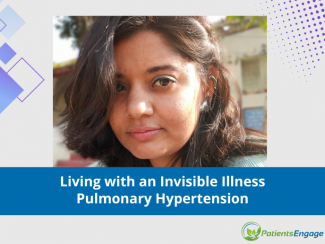
Pain is one of the most disturbing and feared complication of cancer. Therefore, it needs to be addressed at all costs. Excerpted from newly published book – ‘Conquering Pain’.
During her last admission to hospital, three weeks before she finally succumbed to leukaemia, thirteen-year-old Ms M.A. was in severe pain due to multiple reasons:
- Ulcers in the mouth and painful inflammation of the face, as a result of the side-effects of chemotherapy
- Bone pain in the legs, due to the disease affecting the bone marrow; and,
- Burning pain in the soles of her feet, also a side-effect of chemotherapy.
She was on morphine infusion along with paracetamol round the clock for her pain. In addition, she was intermittently spraying her oral cavity with local anaesthetic spray to soothe the pain of the mouth ulcers. Despite all this, she was in intense pain. He parents stood helplessly at the foot of her bed with tears in their eyes, as they could not bear to see their child in pain.
“When I see you both cry, I feel a lot of pain,” the girl told her parents. Her mother tearfully replied, “I wish you would give me your pain. I just can’t bear to see you suffer.” To which this young girl replied, “You won’t be able to bear this pain, Mama.”
This is the extent of the physical and emotional pain of the patient and the distress of the caregivers. In fact, pain is the most disturbing and feared complication of cancer. Therefore, it needs to be addressed at all costs.
Management of pain in patients with terminal cancer
Drug therapy: as mentioned earlier, 70 to 90 per cent of patients with advanced cancer experience pain. Both drug and non-drug modalities are useful in managing pain due to cancer. The WHO analgesic ladder is widely used for managing cancer pain, and up to 75 per cent of patients obtain satisfactory relief by following these guidelines. It was originally developed primarily to treat cancer pain, in 1986, and is a step-wise guideline to manage cancer pain depending on its severity.
The guidelines recommended the use of paracetamol and non-steroidal anti-inflammatory drugs (NSAIDS) as the first line of treatment (Step 1) for mild cancer pain. If the response to the first line drugs is not satisfactory, then patients with moderate to severe pain go higher up the ladder with weak opioids (Step 2). If pain is not controlled, then Step 3 drugs, such as narcotics, are added. Step 2 and Step 3 drugs are always combined with Step 1 drugs (paracetamol) for better pain relief and fewer side effects.
The basic premise of the WHO Ladder is that the drugs be given orally at regular intervals and dosing by actual relief of pain. This particularly useful for patients who are receiving care in their own homes (home care), as these drugs need only be given orally and can be administered by the caregivers.
The most common Step I analgesic that is used for management of pain is paracetamol, and morphine is the commonest Step 3 drug.
Morphine is considered the ‘gold standard’ for treating moderate to severe cancer pain. Yet, morphine tablets, one of the cheapest drugs to treat pain, are available to just 1 per cent of cancer patients in India. The Narcotics Substances and Psychotropic Substance (NDPS) Act, 1985 – which was meant to curb illicit use of narcotics – makes it cumbersome to procure morphine. Hence, many hospitals hesitate to stock morphine. Although he law was relaxed in 2014 to ensure easier availability of morphine, accessibility to oral morphine for cancer pain is still a problem in many parts of India.
Non-drug therapy: One of the best non-drug modalities available for pain relief in cancer patients is ‘empathy’ and ‘non-judgemental’ attitude. As mentioned by Dame Cicely Saunders, sometimes these patients only need someone who understands their pain and suffering. The other non-drug modalities commonly used to treat cancer pain include physical therapies like massage therapy, TENS (transcutaneous electrical nerve stimulation), exercise and ultrasound.
Interventional therapies such as trigger point injections, nerve blocks and radiofrequency ablation can also be used by pain specialists to treat cancer pain. Psychological therapies like relaxation, Cognitive Behavioural Therapy and biofeedback are widely used in cancer pain. Besides these, complimentary and alternate therapies like meditation and acupressure/acupuncture have shown beneficial results. Acupuncture has been used with varying degrees of success to treat pain, nausea/vomiting, fatigue, anxiety, depression and sleep disorders in cancer patients.
Integrative oncology is a relatively new movement which focuses on holistic care of cancer patients with more emphasis on healing and less on technical advice. In this approach, there is integration of conventional treatment of cancer (surgery, chemotherapy and radiotherapy) with complementary and alternate medicine (acupuncture, massage therapy and naturopathy). The clinical practice guidelines of the Society of Integrative Oncology (2009) recommends mind and body modalities as part of a multidisciplinary approach for reducing cancer pain, psychological disturbances and improve the quality of life in patients with cancer.
Many patients with advanced cancer have a lot psychosocial issues, including fear of death. (In some cases it) shows how pain can sometimes stem from psychosocial issues, and how the treatment team can pull together to find a solution that benefits the patient.
(Excerpted from “Conquering Pain – How to Prevent it, Treat it, and Lead a Better Life” – Dr Mary Abraham, Pain & Palliative Care Physician, and Dr Vandana V Prakash, Clinical Psychologist. Published by Harper Collins)






